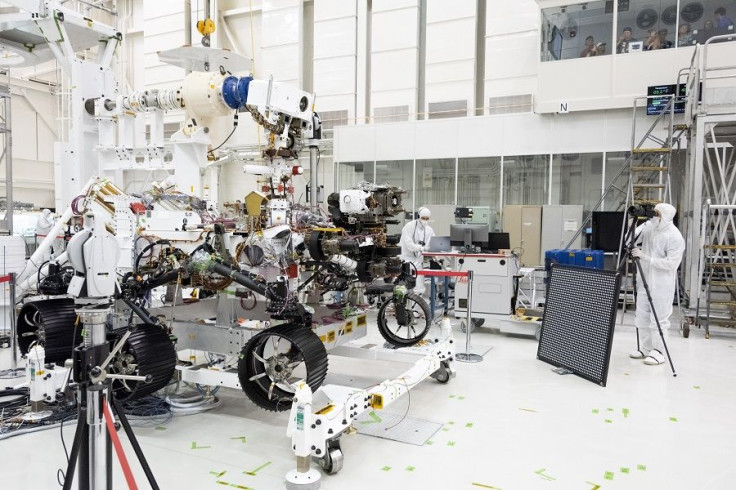NASA's Perseverance Rover Undergoes Rigorous Testing Ahead Of Probable Summer Launch
KEY POINTS
- Perseverance rover underwent unique tests to get ready for the Martian environment
- The launch window for Perseverance rover opens this summer, starting July 17
- Its mission duration lasts for at least one Martian year or 687 Earth days
The Perseverance rover has been undergoing various testing ahead of its planned launch in the coming months. According to NASA, the rover underwent trials by fire, ice, light and sound.
The Perseverance rover cannot be repaired if it somehow breaks down on Mars, so the NASA team behind it has to make sure it can withstand the Martian environment. To do so, the team put the rover through various tests.
"Mars is hard, and everybody knows that," project manager John McNamee of NASA's Jet Propulsion Laboratory said. "What they may not realize is that to be successful at Mars, you have to test the absolute heck out of the thing here on Earth."
The first launch opportunity is from July 17 to Aug. 5 this year. Should things go according to plan, the Perseverance rover will land on Mars on Feb. 18, 2021.

Among the assessments, Perseverance had to endure a sound test wherein engineers placed it inside a special chamber where the sound can be louder than what people may hear if they stand behind a jet engine. This was done to make sure none of the rover's parts and components would not be shaken off when it launches.
The engineers also tested the parachutes that Perseverance will use to land on the Martian surface. It is essentially the same design as the one used by the Curiosity rover in 2012, but strengthened because Perseverance is slightly heavier than its predecessor.
The parachute was tested in a wind tunnel and again in Mars-like conditions three times. Engineers also tested the mortar canister that will deploy the parachute, and it passed all three tests in different conditions.
Perseverance will also have to withstand the harsh conditions on Mars, which includes the sun's rays, the thin atmosphere and the cold Martian nights. For these, the rover was placed in a vacuum chamber where testing included hitting it with powerful xenon lamps for the solar-intensity test, having the atmosphere reduced to just 1% of the Earth’s atmospheric density, and chilling the chamber to -200 degrees Fahrenheit.
These are just some of the tests that NASA engineers conducted to make sure the Perseverance rover will be in excellent shape once it launches via the Atlas V-541 rocket from Launch Complex 41 at Cape Canaveral.
The initial plan was to have Perseverance rover active for one Martian year, which was about 687 Earth days. However, NASA's rovers often exceed their mission duration.
For instance, both the Spirit and Opportunity rovers were only planned for 90-day missions, but both ended up staying active for years. Spirit ended its mission March 2010, years after landing in 2004, while Opportunity ended its mission in February 2019, over a decade after it landed in 2004.
© Copyright IBTimes 2024. All rights reserved.






















